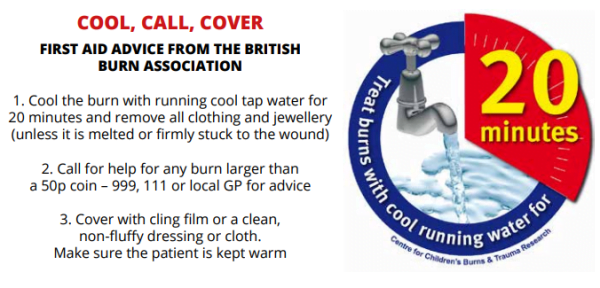As National Burn Awareness Day approaches, the Children’s Burns Trust works alongside the British Burn Association to raise awareness and grow the momentum of National Burn Awareness Day each year.
Severe burns can happen from a variety of sources, from hot drinks, kettles, hot water bottles, fires, saucepans, irons, hair straighteners and taps and showers.
As the trade association representing bathroom manufacturers, the BMA and its members take the issue of safety in the bathroom seriously and scalding remains a pressing health concern that can, with the right will and determination, be greatly reduced.
462 children were admitted to an NHS Burns Service following injuries in the bathroom in 2022. Hot water from taps, baths, sinks and showers can cause severe scalds. The young and elderly are especially vulnerable as their skin is thinner, and they have less ability to remove themselves from the scalding water.
Bath water can cause such bad burns that children need years of treatment and may be scarred for life.
The incidence of bath and shower scalds has generally decreased over the last 14 years since the change in building regulations in 2009 to ensure all baths in new builds and refurbishments are fitted with a thermostatic mixing valve (TMV), a campaign that was supported by Children’s Burns Trust.
However, bath and shower scalds still happen, and the BMA would urge the government to adopt legislation mandating the use of TMVs in residential properties where there are mixer showers or bath fills. This one step would significantly reduce scalding incidents for the vulnerable, help alleviate the financial burden for the NHS and prevent the trauma so many suffer from bath and shower scalds.
The Children’s Burns Trust website has advice on what to do in the event of an incident, and much more in regards to support, so please check out their website for information. For instance, when running a bath, always put the cold water in first and then bring it up to the right temperature – then test the temperature with the back of your hand before you or a child gets in.
The British Burn Association recommend the COOL, CALL, COVER approach to burns.
- Cool the burn with cool running water for 20 minutes and remove all clothing and jewellery (unless it is melted or firmly stuck to the wound).
- Call for help for any burn larger than a 50p coin: 999, 111 or local HGP for advice.
- Cover with a clean, non-fluffy dressing or cloth. Make sure the patient is kept warm.

